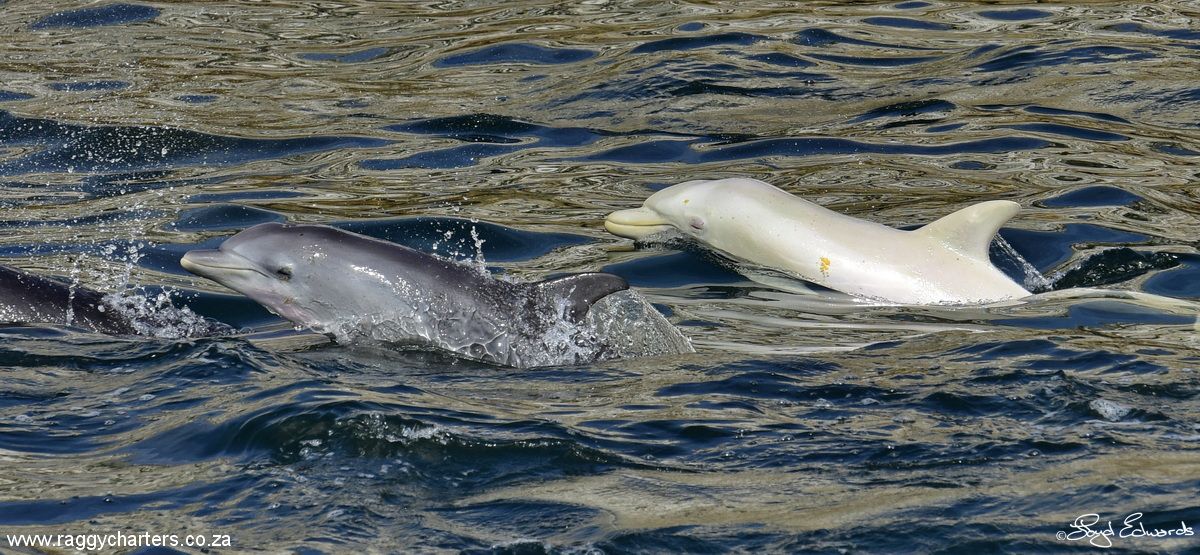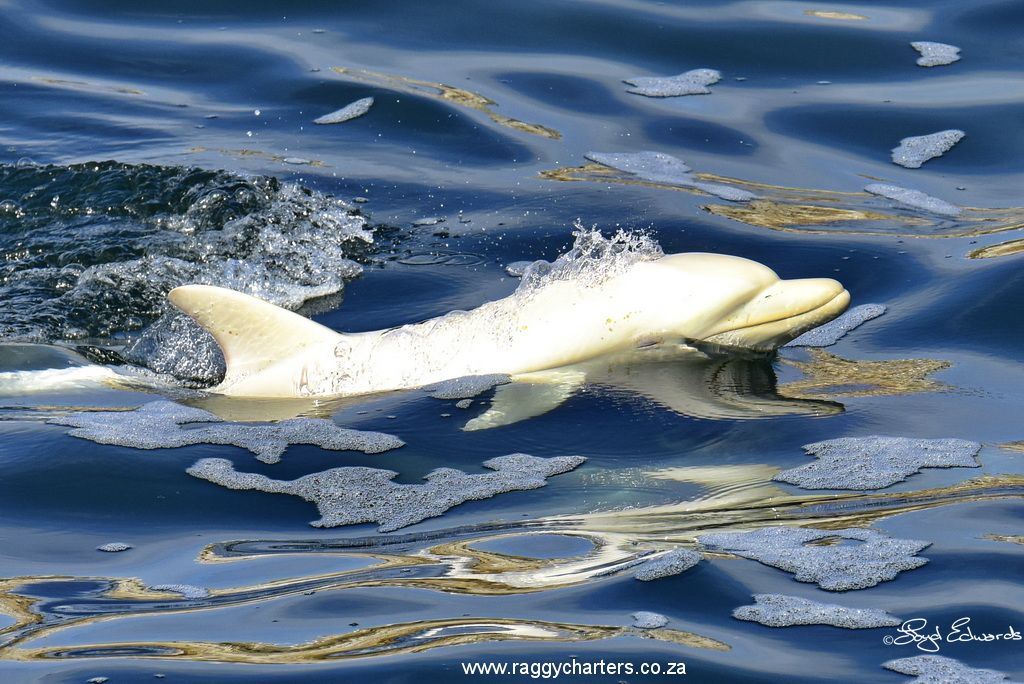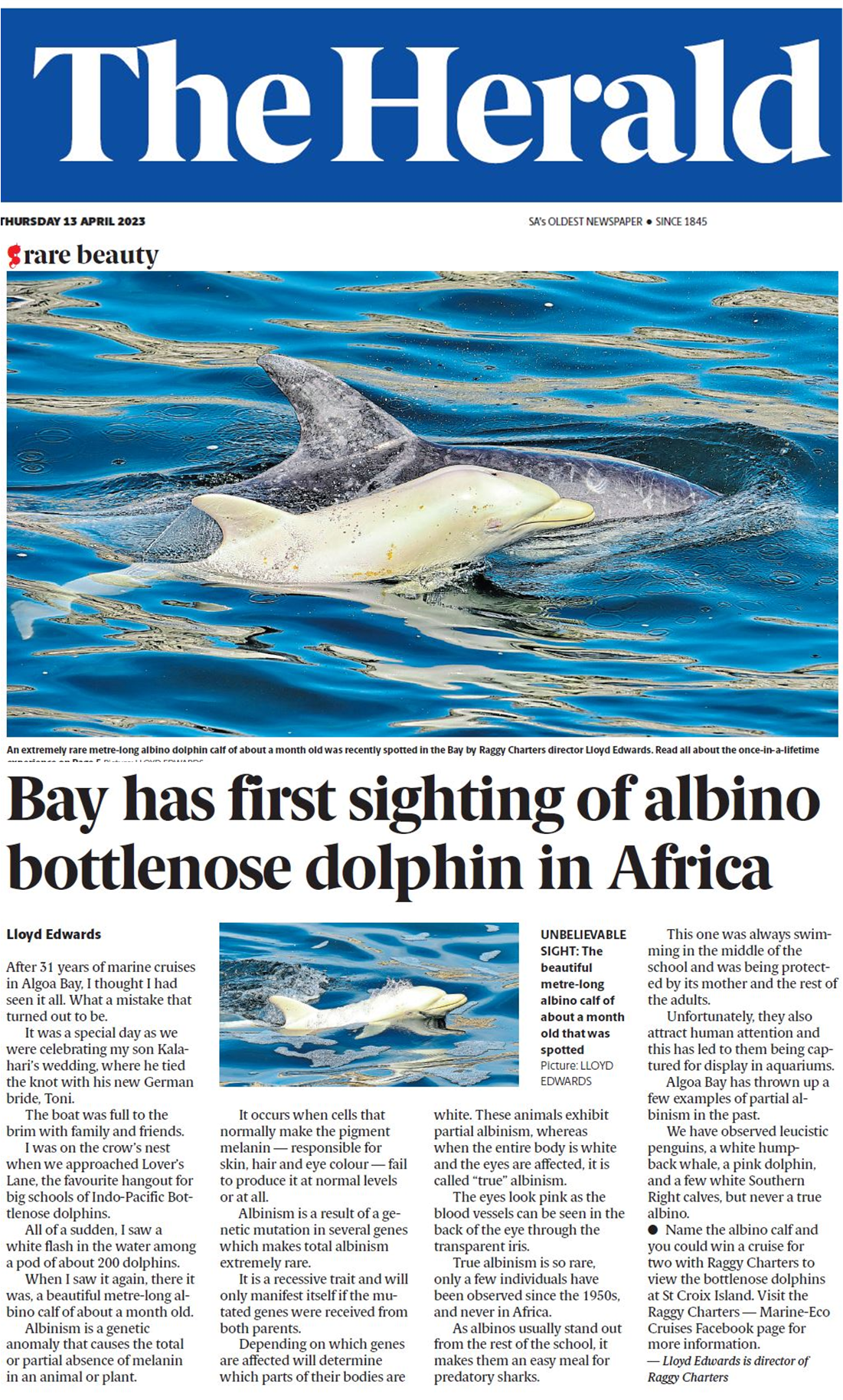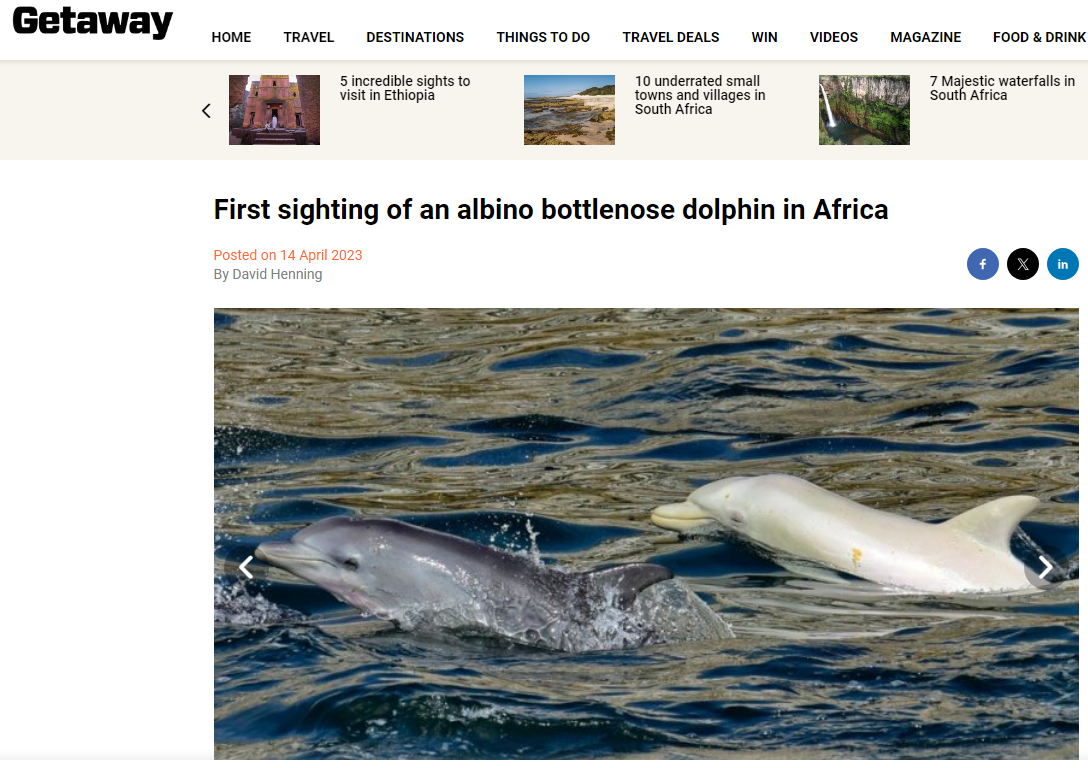First sighting of an Albino Bottlenose Dolphin in Africa
By Lloyd Edwards
Tuesday, 4th April 2023After 31 years of marine cruises in Algoa Bay . . . I thought I had seen it all. What a mistake that turned out to be! It was a very special day as we were celebrating my son Kalahari’s wedding where he tied the knot with his new German bride Antonia. The boat was full to the brim with family and friends. I was on the crow’s nest when we approached Lover’s Lane, the favourite hangout for big schools of Indo-Pacific Bottlenose dolphins. All of a sudden, I saw a white flash in the water among a pod of around 200 dolphins. When I saw it again, there it was, a beautiful metre long ALBINO calf of around a month old.
Albinism is a genetic anomaly that causes the total or partial absence of melanin in an animal or plant. It occurs when cells that normally make the pigment melanin, responsible for skin, hair and eye colour, fail to produce it at normal levels or at all. Albinism is a result of a genetic mutation in several genes which makes total albinism extremely rare. It is a recessive trait and will only manifest itself if the mutated genes were received from both parents. Depending on which genes are affected will determine which parts of their bodies are white. These animals exhibit partial albinism, whereas when the entire body is white and the eyes are affected, it is called “true” albinism. The eyes look pink as the blood vessels can be seen in the back of the eye through the transparent iris.
True albinism is so rare that only a few individuals have been observed since the 1950’s and never in Africa. As albinos usually stand out from the rest of the school, it makes them an easy meal for predatory sharks. This one was always swimming in the middle of the school and was being protected by its mother and the rest of the adults. Unfortunately, they attract also human attention and has led to them being captured for display in aquariums. An example was “Angel” who was caught in the infamous Taiji Bay in Japan where hunters brutally kill hundreds of dolphins every year. This one was spared and put in a display at the Taiji aquarium.
Raggy Charters and the World Cetacean Alliance have been fighting for the closure of these marine circuses for many years now. It is an extremely cruel practice and should never be supported. Algoa Bay has thrown up a few examples of partial albinism in the past. We have observed leucistic penguins, a white humpback whale, a pink dolphin and a few white Southern Right calves, but never a true albino.

A normal bottlenose calf of the same age swims in front of the albino. There is no mistaking the difference in colour. Taken with a Nikon D810 fullframe, ISO 280, 200mm zoom, f/8 and 1/1250th second.

This albino calf is definitely not a new-born, but probably around a month old, judging from some of it's smaller cousins in the same school. It looks in a good physical condition.

A true albino has pink eyes that are clearly visible in this image. They are also light sensitive, which is why the calf is keeping it's eyes closed. The calf stays close to it's mother's side.

The albino calf always tries to stay in the middle of the school, so it can be afforded the best protection against predators. Most albinos have a tough time surviving, especially during their first few months, as they are much more visible to predators



Popcorn makes it onto Getaway Online:














